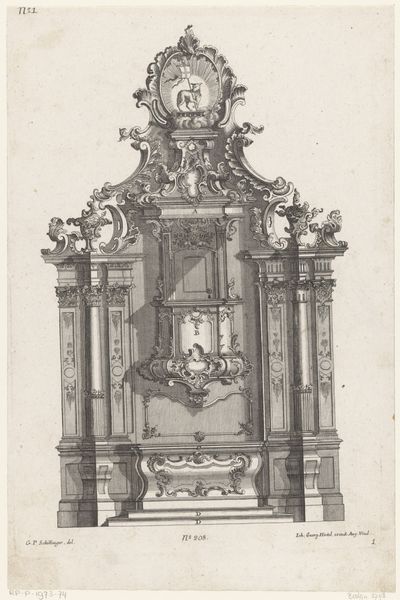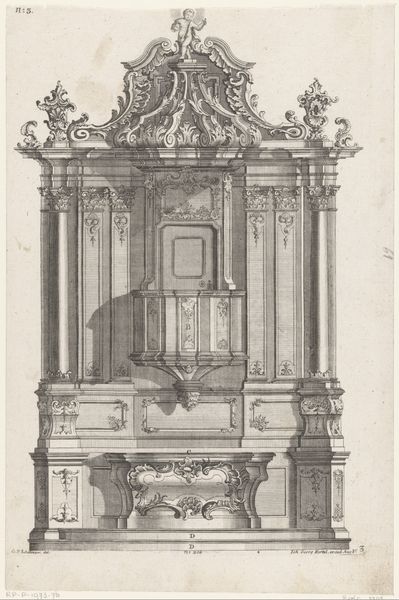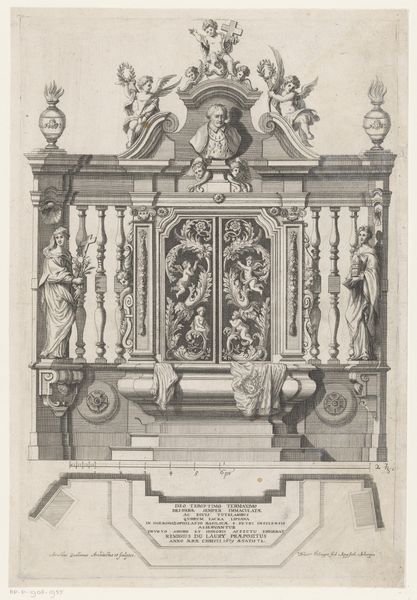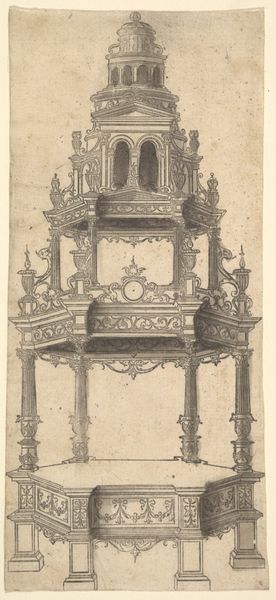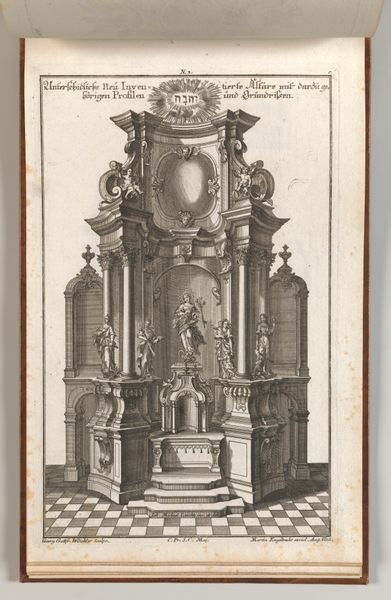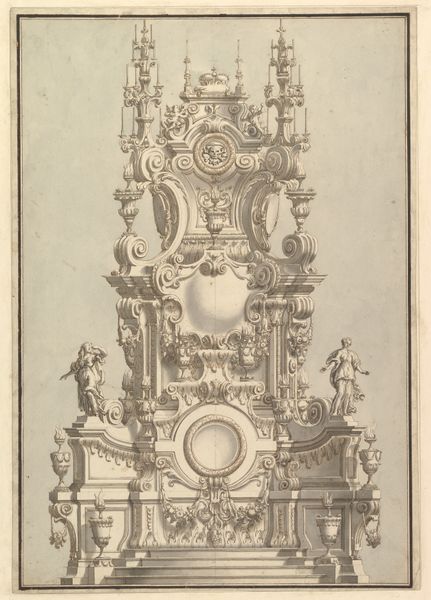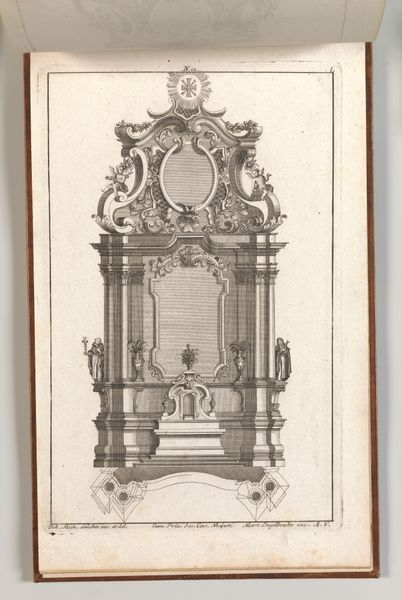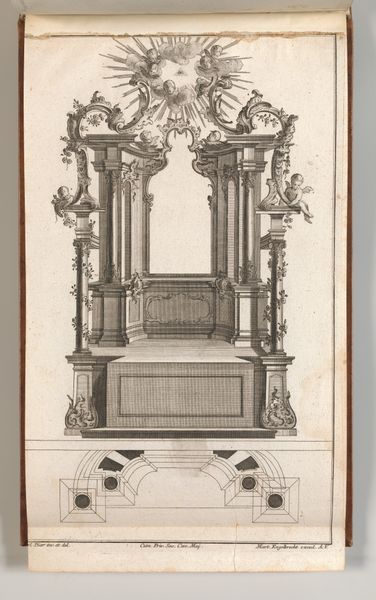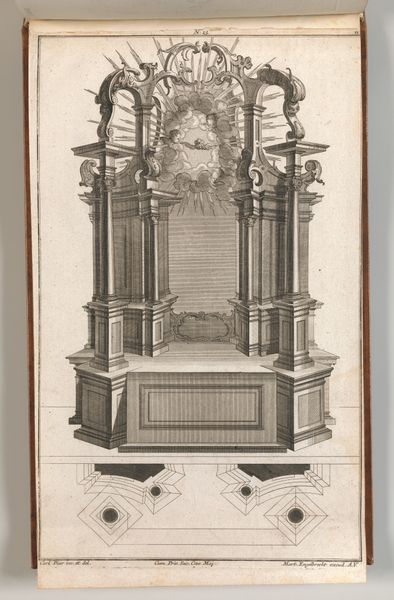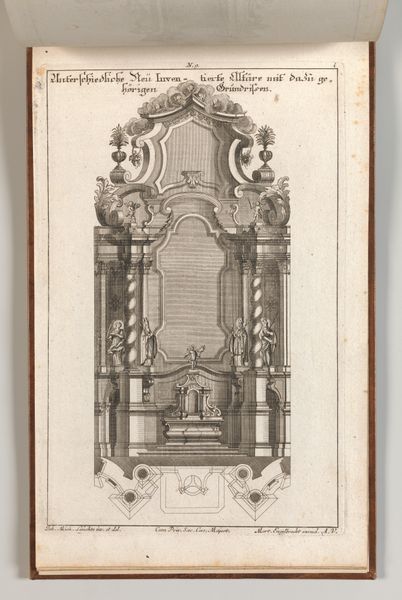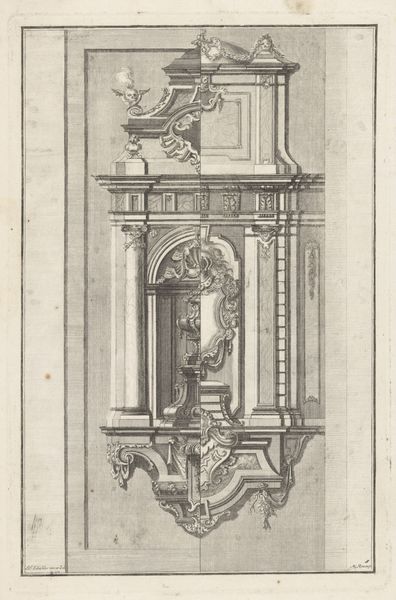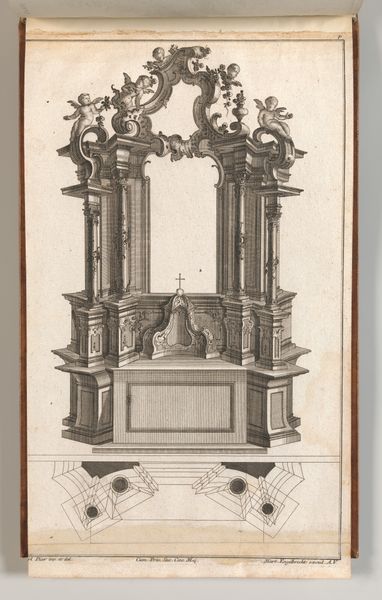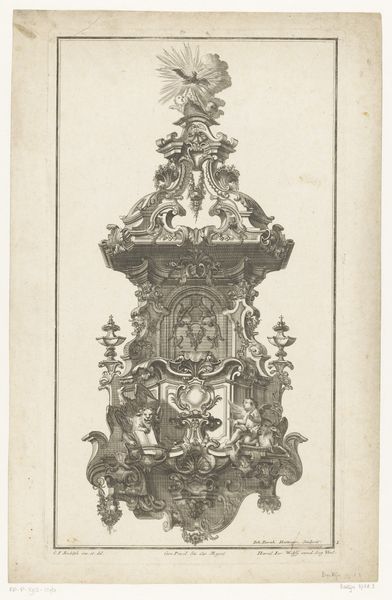
drawing, print, metal, engraving, architecture
#
drawing
#
toned paper
#
light pencil work
#
quirky sketch
#
baroque
# print
#
metal
#
pencil sketch
#
sketch book
#
figuration
#
personal sketchbook
#
sketchwork
#
pen-ink sketch
#
sketchbook drawing
#
sketchbook art
#
engraving
#
architecture
Dimensions: height 323 mm, width 213 mm
Copyright: Rijks Museum: Open Domain
Curator: Here we have a fascinating piece titled "Kanselaltaar met het alziend oog," or Pulpit Altar with the All-Seeing Eye. Created sometime between 1705 and 1775, this anonymous work resides in the Rijksmuseum and employs drawing and engraving on metal. Editor: My first impression is a certain controlled exuberance. The baroque ornamentation, while intricate, feels deliberately planned, almost mathematically precise. There's a tension between the wild flourishes and the rigid architectural structure. Curator: Exactly. Note the meticulous detailing. The columns, the ornate carvings, the figures – all rendered with impressive precision. Semiotically, the all-seeing eye dominates the design, set at the very apex. Its placement communicates power, surveillance, and perhaps a patriarchal form of divine judgment. Editor: Precisely. This all-seeing eye isn't just an architectural detail; it reflects the increasing surveillance and control exerted during the Enlightenment, echoing societal shifts in power dynamics and religious doctrine. The cherubic figures seem almost oblivious to this omnipresent gaze, highlighting an imbalanced relationship. How might the role of this particular church contribute to this relationship? Curator: Interesting question. Observe, too, how light plays a vital role. The engraver uses hatching to create contrast, emphasizing the three-dimensionality of the altar. This manipulation of light and shadow emphasizes the dramatic impact typical of Baroque art. Editor: Indeed. It also enforces a hierarchy. Those in the light are blessed; those in shadow are not. Think about how such symbolism would affect marginalized community members, subtly reinforcing a sense of exclusion or judgment within the community. Curator: It is undeniably a beautiful rendering, though. Its formal structure is very successful as an engraving—complex, layered, but also ordered. Editor: It does provoke important questions. What stories do monuments such as these tell? How do we engage with that complicated legacy? That’s what resonates most deeply for me.
Comments
No comments
Be the first to comment and join the conversation on the ultimate creative platform.

